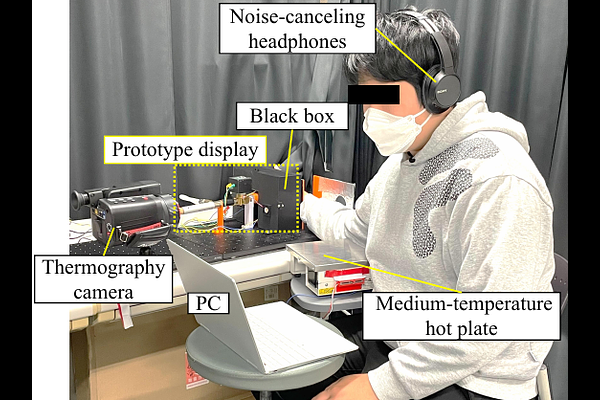Integration of Independent Heat Transfer Mechanisms for Non-Contact Cold Sensation Presentation With Low Residual Heat

Integration of Independent Heat Transfer Mechanisms for Non-Contact Cold Sensation Presentation With Low Residual Heat
Jiayi Xu, Shoichi Hasegawa, Kiyoshi Kiyokawa, Naoto Ienaga, Yoshihiro Kuroda
AbstractThermal sensation is crucial to enhancing our comprehension of the world and enhancing our ability to interact with it. Therefore, the development of thermal sensation presentation technologies holds significant potential, providing a novel method of interaction. Traditional technologies often leave residual heat in the system or the skin, affecting subsequent presentations. Our study focuses on presenting thermal sensations with low residual heat, especially cold sensations. To mitigate the impact of residual heat in the presentation system, we opted for a non-contact method, and to address the influence of residual heat on the skin, we present thermal sensations without significantly altering skin temperature. Specifically, we integrated two highly responsive and independent heat transfer mechanisms: convection via cold air and radiation via visible light, providing non-contact thermal stimuli. By rapidly alternating between perceptible decreases and imperceptible increases in temperature on the same skin area, we maintained near-constant skin temperature while presenting continuous cold sensations. In our experiments involving 15 participants, we observed that when the cooling rate was -0.2 to -0.24 degree celsius per second and the cooling time ratio was 30 to 50 %, more than 86.67 % of the participants perceived only persistent cold without any warmth.